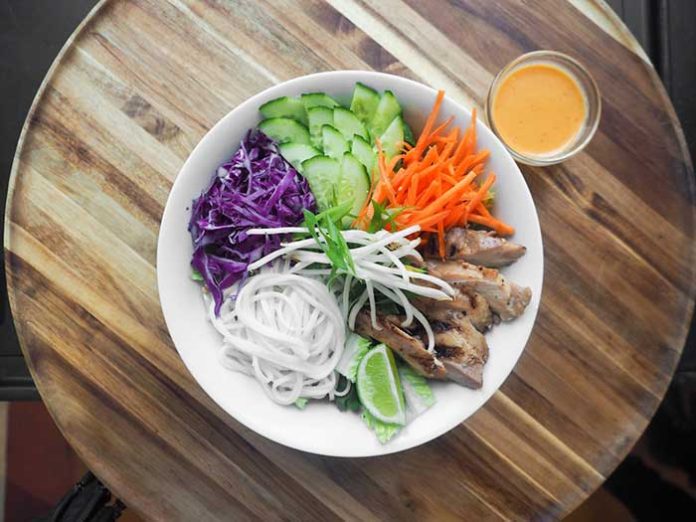Have you gained some extra pounds this summer break by having pizzas, lasagnas or excessive energy drinks? And are you thinking of taking shortcuts like a crash diet?
Believe me! It won’t help. Bitter but true.
What can benefit you is to eat healthily. And it is not just a one-day thing. It is a lifestyle. To remain in shape and to boost up the immune system, it is a must to add veggies and soups to your daily meal plans. According to a study, consuming low-calorie soups can help reduce the desire to have an excess amount of food, which leads to weight loss.
Moreover, it is necessary to remember that only eating green salads or soups can never reduce fat. So you should incorporate regular exercise into your daily routine to reach your maximum potential.
What Experts are Saying Regarding Soup and Salad Diets?
According to nutritionist Naini Setalvad, a well-planned and mindful soup and salad diet is the perfect way to lose belly fat and maintain health. As they are packed with fiber content, you can customize them yourself. By using different ingredients, you can get minerals, vitamins and antioxidants as you want.
Chrissy Carroll, RD, MPH, is of the opinion that although the concept of taking soup-based diets to lose weight is the general assumption, the truth is taking soup-based cuisines lacks essential nutrients. Many experts agree are of the opinion that one should eat vegetable soups alongside other dishes as well to get all the necessary calories and nutrients.
According to research conducted on satiating efficiency of foods, it was found that consuming a small preload of soup decreases the appetite, generally in women rather than men.
In vegetables and fruits, low fructose fruits can be a helpful start for people who want to reduce weight. Because fruits and veggies are rich in water content and fiber and low in calories, people feel full; without much intake of fats.
Suggested:
How you should consume soups and salads for weight loss?
If you do not follow the proper manner of preparing dietary soups and green salads, you will gain more kilos; instead of losing them. So it is necessary to take some notes before heading on your weight loss journey.
1. Appropriate portion size
Eating soup and salad diet meals to reduce weight is good. But if you consume them in excessive quantity, it will not benefit you. The general calorie intake requirement for men is 2000 calories for women and 2500 calories for men. So make sure not to exceed this limit when preparing your salads and soup meals. Generally, recommended serving size of salads is 3 ounces. So it is better to follow these serving sizes to get the maximum benefits of the diet.
As for the ingredients, the US Department of Agriculture advises having lettuce, cauliflower, cucumber, green pepper and cherry tomatoes. You can also refer to Dr. Weil’s Anti-Inflammatory Food Pyramid to understand the recommended serving size of different ingredients in your daily diet plan.
2. Taking only soup in lunch? Better take proper breakfast and dinner to reach the calorie count
Taking soup-based lunch can reduce body weight. But you should combine it with a nutritious breakfast like an egg white vegetable omelet, low-fat yogurt and fresh fruits. By maintaining a habit of eating breakfast that makes you full and satisfied, you can follow the soup-only lunch plan for a long time.
3. Best ingredients for nutritional soup
If you are making soups by yourself, make sure to add veggies (like carrots and broccoli) and broths. Do not add any high-fat ingredients like creams and sugars. However, you can add grains and lean meats if you want. Go for leafy vegetable options and add sweet potatoes, Swiss chard and kale to get an extra flavor. In the end, dress with vinegar, olive oil or herbs to have a delicious meal.
You can also have fruit juices, but it is always better to have veggies and fruits along with their fiber content. The juices are pulp-free, so you won’t feel satisfied or full after drinking them.
7 Delicious Soup-based Meal Plans | You Should Definitely Try

Who said that your diet meals have to be bland?
Here are some delicious recipe options for soup-based diet meals as recommended by Victoria Seaver, M.S., RD on Eating Well.
It is a seven-day meal plan – based on soups that you can customize according to your preferences.
1. Ribollita Soup
Use a day-old bread and add it to the broth. Plus, add fiber content in the form of mashed beans and garnish it with extra-virgin olive oil. Enjoy with whole-grain bread or grated Parmesan.
2. Southwest Salmon Chowder
Get high protein meal by preparing this one. Filled with omega-3 fatty acids and lean protein, it is the most suitable meal in winter days.
3. Green Lentil Soup
You can never go wrong with greens. Add French green lentils and brown lentils, and add coriander to give it more layers of flavor. Packed with fibre content, it is the perfect soup-based lunch to have on a day off.
4. Chicken pho – A Vietnamese Chicken Noodle Soup
A classic Vietnamese soup is a perfect meal option to try on a slow day. Packed with veggies and spices like cloves, ginger, herbs, lime and sprouts, you can have a tasty chicken noodle soup with veggie salad on the side.
5. Curried Parsnip & Apple Soup
Get a creamy flavor with this apple soup containing cumin, ginger and coriander. A touch of spices gives it a more tasteful twist and aroma. Serve it with whole bread.
6. Chicken and vegetable soup
Chicken and vegetable soups seem like an ordinary one. But you can spice up this century-old recipe with a new twist by adding cilantro and fresh lime. Add a smoky aroma, peppers and garlic to enhance the taste. Serve with tortilla chips and salads to complete the cuisine.
7. Sweet Potato Peanut Bisque
Like the traditional West African peanut soup, it is a delight for vegetarians as it contains sweet potatoes. Add green chilies and chopped peanuts to give it a new taste and texture. Serve with a green salad if you like.
The Bottom Line:
Let’s be honest. Leaving your comfort zone and shifting to a diet can be daunting and overwhelming for most of us. So it is always better to start small. Start by replacing junk food or fast food with healthier options like salads and soups one by one.
If you try to alter your eating habits to 180 degrees opposite, you will be; most likely revert like a spring. So incorporate these options, little by little, into your diet to develop a habitual and healthy lifestyle.





